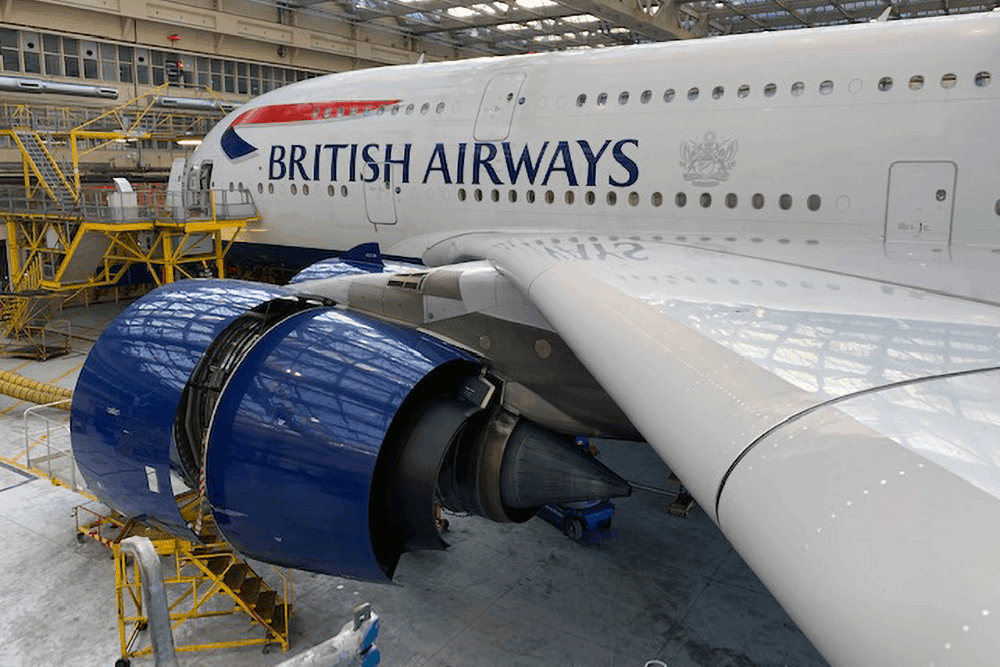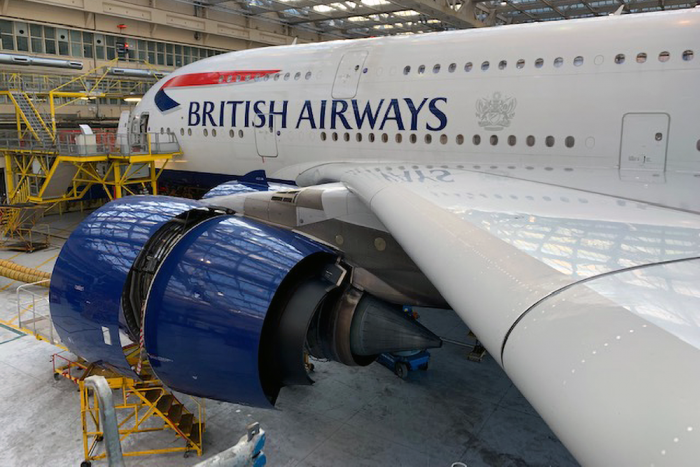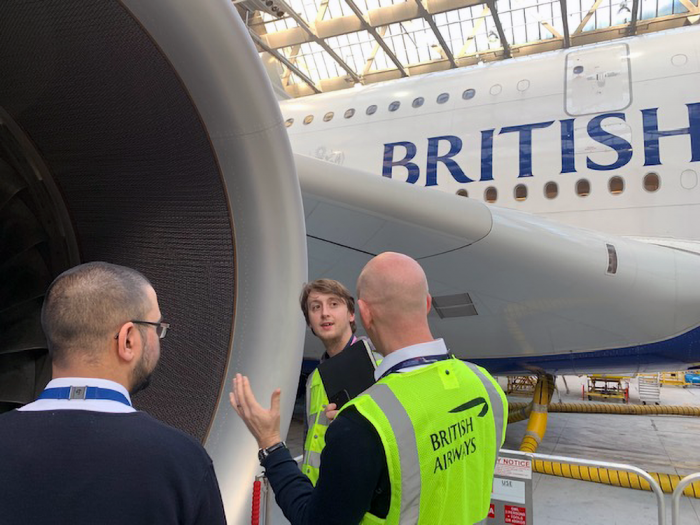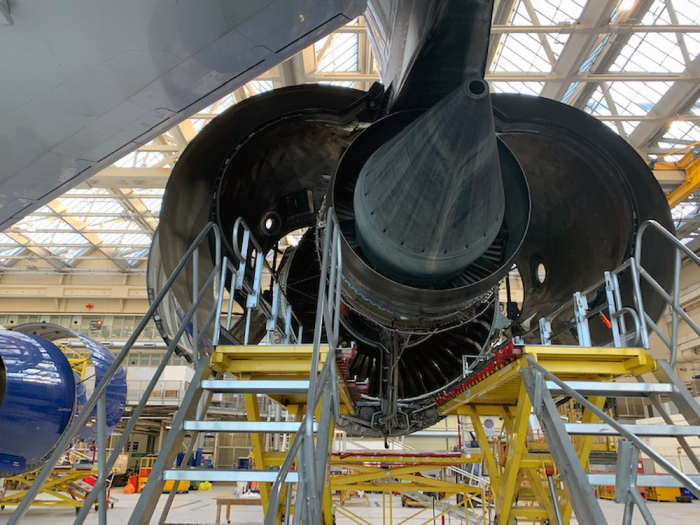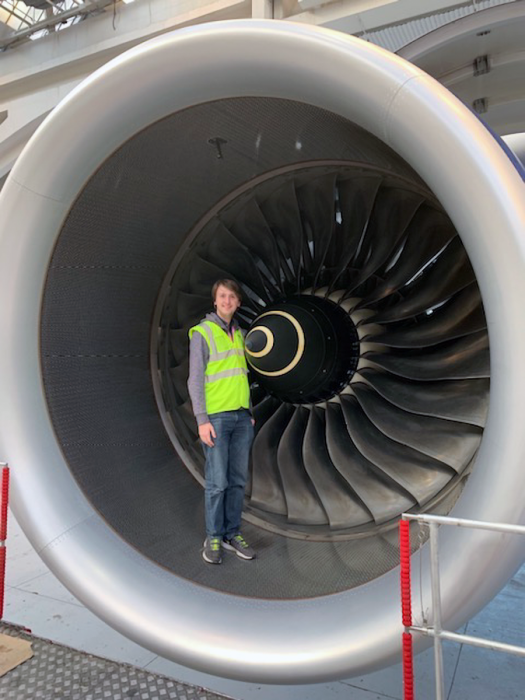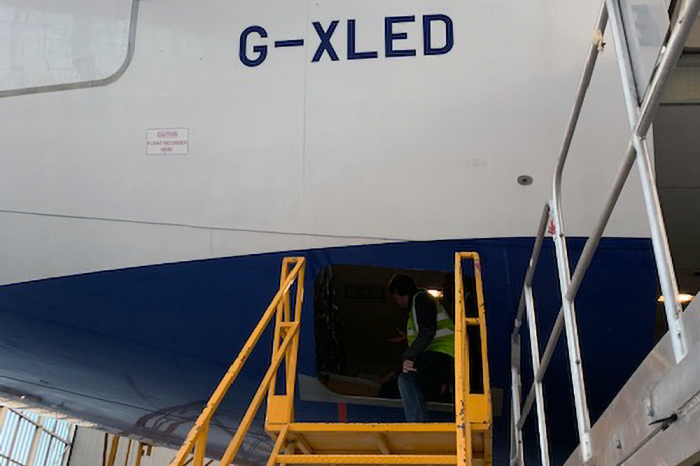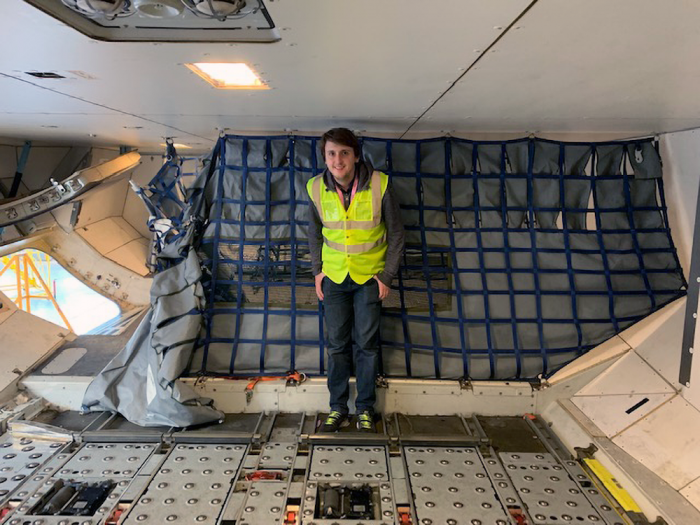We’ve been working with British Airways to provide readers with exclusive behind the scenes access. So far we’ve seen how pilots and cabin crew are trained. However, we recently visited the airline’s maintenance department, where we were given a tour around one of the airline’s Airbus A380s, G-XLED.
I’ve flown on G-XLED before, however, it’s not until you stand next to the aircraft that you appreciate its immense size. The largest passenger aircraft in the skies takes up almost all of the hangar space available.
Heeran Jethwa, a British Airways Engineering Licensed Aircraft Engineer, is guiding us around the aircraft today joined by Phil Baxendale, the Engineering Head of Quality and Technical at British Airways. He explains that the aircraft is in for a regular checkup to ensure everything is in top shape. He adds that when an A380 is in the hangar, it really is all hands on deck.
With a fleet of just 12 aircraft, the airline would struggle to substitute the A380 if maintenance overruns. Even if it is replaced by a Boeing 747, many passengers would still face being bumped as a result.
Starting outside
Following a brief chat about safety, we headed into the hangar. The immense size of the aircraft really makes an impression. First up, we went for a walk underneath the wing. The aircraft’s number four engine had its cowling open. This was accompanied by scaffolding which allowed us to get right inside the engine. It was surprising how small the interior of the center of the engine actually is.
While the British Airways Airbus A380 only has Rolls Royce Engines, not each one is created equally. Only the number 2 and number 3 engines are equipped with reverse thrust. The aircraft also only uses these two engines to taxi to the runway.
We then worked across to the number three engine, which had its cowling closed. However, it had a platform prepared to inspect the engine's fan blades. Stepping up onto this, I was once more blown away by the size of the engine's components. I was invited to step inside the engine, and despite being 6ft 3in tall, I there was more than enough space to stand up.
A first peek inside
The first peek inside the aircraft took us into the A380’s cargo deck. This is a place where few passengers can say they’ve been. Given the huge size of the aircraft, I’m surprised that I’m not able to stand up straight inside the cargo hold, something I can do with ease in the main cabin.
We climbed in through the bulk item door at the rear of the aircraft. Unlike the big cargo containers that go in the main part of the belly, this part holds smaller things such as a last-minute checked bag, or pets as they are easily accessible on the ground. Interestingly, the cargo hold is split into two, so we had to leave the same way we arrived.
Around the other side of the aircraft, one finds even more scaffolding. This has been placed to replace a component only accessible from the top of the engine. We carefully climbed the scaffolding to the top, and I was greeted with yet another magnificent sight. You can't truly appreciate the sheer scale of the Airbus A380 wing until you stand towards the end to admire it.
To read part two of this article, be sure to click here. In part two we head inside the aircraft's cabin to see some of the secrets the aircraft harbors.
Have you flown on G-XLED? Did you realize how much work goes into maintaining it? Let us know your thoughts in the comments!

